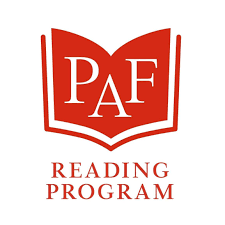BILINGUAL LITERACY
Professional development for bilingual teaching
Why teach bilingual students differently?
[Text]
This training improves the teachers practices of educators facing bilingual students either in general education or immersion settings through:
- A better understanding of the Science of Reading as a whole;
- A deep dive into the specificities of Spanish as a language;
- A guided approach to implement the gained knowledge in the classrooms.

OBJECTIVES
- Increasing the knowledge of educators on the Science of Reading;
- Increasing the knowledge of educators on the specificities of Spanish in reading acquisition;
- Adapting the Spanish reading lessons and instruction to the Science of Reading.
OUR METHOD
Science of Reading training
Sessions on what the research says about the Science of Reading through the recording of the Language and Literacy Institute for Educators, and presentations, discussions and reflections with PAF Master Teachers.
Translation into the classrooms
Sessions with a reading researcher specialized in Spanish reading acquisition on the specificities of Spanish, the comparison with English, and how teaching Spanish looks like in the classrooms.
Implementation workshop
A workshop to guide the educators to implement the gained knowledge into their classrooms through lesson planning, monitoring and analyzing students data.
contact us for more information & pricing
Partners

PAF Reading Program
The PAF Reading program is an effective program for teaching beginning reading using multisensory techniques supported by scientific research. PAF incorporates reading, spelling, and handwriting instruction into unified lessons that benefit all children, and can prevent reading failure in at-risk children. In over forty years of use, thousands of children have learned to read thanks to PAF!
Intelexia
Intelexia has created “Aprendo Leyendo”, a holistic reading education program developed to give children precision, automaticity and fluency to reach an optimum level of reading comprehension.
Learning to Teach, Teaching to Learn




